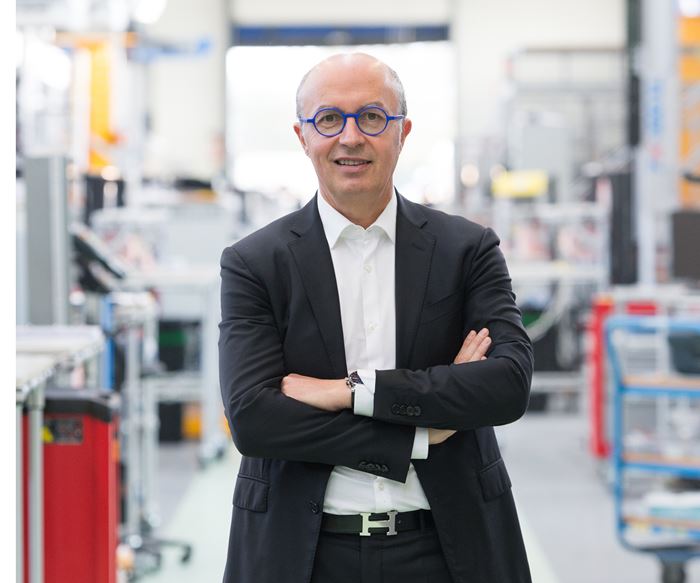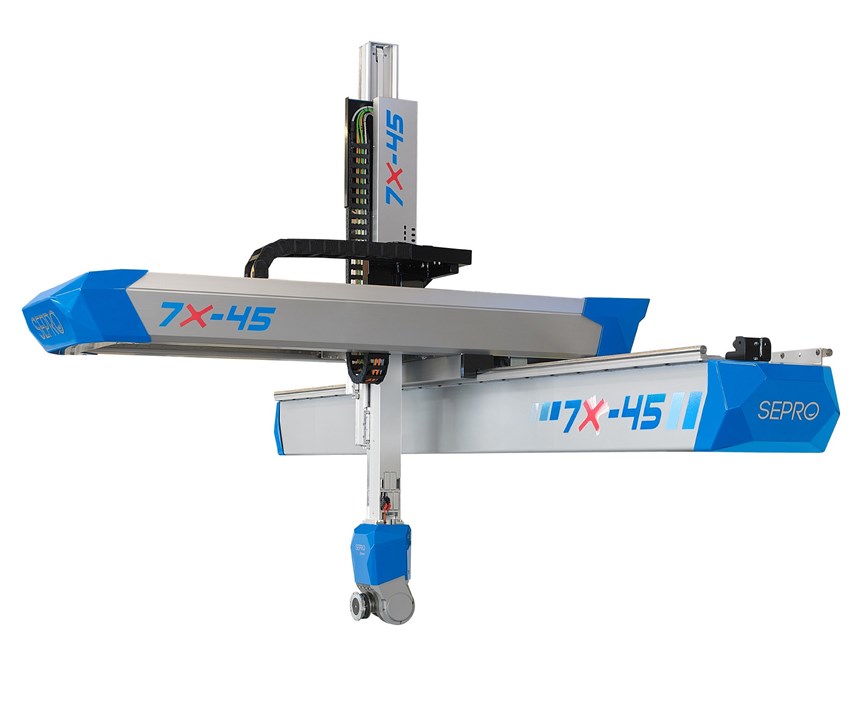Global Player in Robots Puts More of Its Chips on North America
Sepro has global distribution but North America is its biggest growth market. It is manufacturing here for the first time.
Sepro America has two main messages at NPE2018: One is the breadth of its capabilities, both technologically and geographically; and the other is its focused attention on the North American market. “We have worldwide capability,” says Jean-Michel Renaudeau, CEO of Sepro Group, based in France. He points out that the Group has 11 subsidiaries and 40 distributors and representatives in Europe, the Americas, Africa, Asia, and the Pacific. “But the North American market accounts for one-third of our total sales and is the most important area for future growth.”
As a result, Renaudeau says, “We want to be more local, adding assembly capability for large robots at our newly expanded plant near Pittsburgh.” One of the very first “made in America” Sepro robots, and the first ever manufactured outside of France, greets visitors at the entrance to Booth W8571. It’s a five-axis model 7X-45—a three-axis Cartesian robot with a two-axis Stäubli servo wrist—large enough to serve injection presses from around 770 to 1430 tons. Already sold to Wilbert Plastic Services, it’s among the first of 40 big robots Sepro America is planning to build this year. These will include three-axis robots in the Strong line for basic pick-and-place applications and the higher-speed S7 line, as well as the five-axis 7X models.
This move to local manufacturing is part of a plan to make Sepro America a North American regional hub, coordinating strategy for the U.S., Canada, and Mexico, which each have their own separate subsidiaries. And Renaudeau emphasizes that Sepro offers more than just robots to North American molders. “We also offer cell integration, simple or complex. We have a strong, dedicated team in Pittsburgh. Our ‘Solution by Sepro’ program provides injection molders with equipment, engineering expertise and additional services to bring new levels of efficiency and quality to their process.”
Sepro’s other message at the show is about technological breadth and depth. “We have the widest portfolio in the robot market,” states Renaudeau, “stretching from simple sprue pickers to robots for the largest machine you want to automate. We can do everything from pick and place to complex palletizing. We have three-axis and five-axis Cartesian models and six-axis articulated robots from both Stäubli and Yaskawa Motoman.”
Six of these robots are performing acrobatics at Sepro’s booth, and 10 more are working in molding cells around the show, at Sumitomo (SHI) Demag, Haitian, Billion, Toshiba, Maruka Toyo, and others (some private-label arrangements are confidential).
Visitors to those other booths can see varying degrees of integration of the robot with the molding machine, from simple “mirroring” or emulation of the robot screen on the injection-machine controller to launching the robot’s setup recipe along with the injection-machine program for a given mold, directly from the injection-press control. This integration is a key element of Sepro’s “Open 4.0” program, to which a special section of its booth is dedicated. There, visitors can experience how all of Sepro’s robots, from three to six axes, share a single, uniform control interface (HMI): the Visual control platform. They can also explore two new retrofittable “apps” for Visual controls—OptiCycle for automatically optimizing the robot cycle, and Live Support for remote troubleshooting assistance.
“We are focused on achieving even more OEM relationships,” states Renaudeau, “as part of our aim to be a major leader in North America.”
Renaudeau hints that next evolution of Sepro’s control technology, to be called Visual 4.0, will debut later this year at the Fakuma 2018 show in Germany. It is being developed by Sepro together with the Robotics Institute at Carnegie Mellon University. If you want to know more, see what you can learn at Booth W8571.
Related Content
Using Data to Pinpoint Cosmetic Defect Causes in Injection Molded Parts
Taking a step back and identifying the root cause of a cosmetic flaw can help molders focus on what corrective actions need to be taken.
Read MoreBack to Basics on Mold Venting (Part 1)
Here’s what you need to know to improve the quality of your parts and to protect your molds.
Read MoreProcess Monitoring or Production Monitoring—Why Not Both?
Molders looking to both monitor an injection molding process effectively and manage production can definitely do both with tools available today, but the question is how best to tackle these twin challenges.
Read MoreHow to Reduce Sinks in Injection Molding
Modifications to the common core pin can be a simple solution, but don’t expect all resins to behave the same. Gas assist is also worth a try.
Read MoreRead Next
For PLASTICS' CEO Seaholm, NPE to Shine Light on Sustainability Successes
With advocacy, communication and sustainability as three main pillars, Seaholm leads a trade association to NPE that ‘is more active today than we have ever been.’
Read MoreSee Recyclers Close the Loop on Trade Show Production Scrap at NPE2024
A collaboration between show organizer PLASTICS, recycler CPR and size reduction experts WEIMA and Conair recovered and recycled all production scrap at NPE2024.
Read More






















